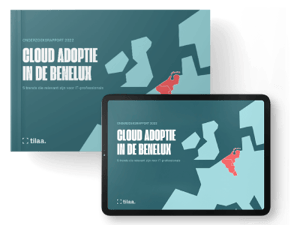
Among the first things you learn about cloud services is that there’s more than one type of cloud.
The usual split is between public, private, or hybrid, differentiating between off-premises hosted solutions shared with others, on-premises solutions dedicated to you, and a mix of both shaped to fit. But as well as type of cloud, there’s also more than one scale of cloud – from the compact size of a single company’s servers to the world-girdling vastness of Big Tech’s offerings.
And when you’re choosing a cloud provider, scale matters more than you think.
While a small-scale private cloud can be customised precisely for your needs, it may lack the capacity for your busiest times, slowing your business down. While the vast public clouds of Google, Microsoft, and Amazon offer high speeds and storage, with the possibility of high redundancy but with millions of customers, you can forget about being treated as a valued individual customer.
In this article, we’ll look at these different “scales” of cloud, and see if there’s a middle way.
The nuclear option: leaving the cloud altogether
First, a cautionary tale. At Tilaa, we’re hearing story after story of companies leaving the brave new world of cloud computing, and migrating their applications and data back onto their own servers. As if the great promises of cloud services – outsourcing to experts, burst capacity on demand, flexible pricing models – somehow meant nothing.
It’s not a huge trend, but it certainly exists. And some of these are multinational enterprises themselves, not startups, so these decisions aren’t being taken lightly. It’s a complex issue involving the rising costs of “all you can eat” solutions … versus the increased complexity (but also increased control) of taking it back inhouse.
But leaving the hyperscale cloud for your own private-scale one, known as “bare metal” computing, is a major decision that won’t always pay off. Let’s look at where both options make sense. (And where it makes sense to do something else.)
The cloud landscape: by the numbers
Spending on cloud services of all kinds passed US$400bn some time back, and it’s not slowing. Most of that spending is by the enterprise segment, with large companies shovelling US$276bn into datacentre hardware and software plus cloud infrastructure services in 2021. Amazon Web Services (AWS) alone bills its millions of customers over $62bn a year.
But a report by software vendor Flexera suggests a third of that spend may be wasted. Nearly a fifth of businesses with over 1,000 people spend between US$2.4m and US$6m on their cloud operations, with many budgeting far more; among SMEs, the most common figure is US$0.6-1.2m. Each year. So, you’re not just paying for a cloud service; you’re paying for the provider’s depreciation, amortisation, and other hidden costs like its ambitious hardware upgrades too.
This is what’s driving some companies to go it alone. But what are the draws and drawbacks?
1. Running your own show: the bare metal case
Of course, having your own software, on your own servers, in your own buildings is attractive to a lot of businesses. Financial institutions like the secure feel of owning equipment outright, with nobody else able to assert ownership or responsibility; if the server goes down, it can be dealt with inhouse, with no need to rely on a distant Support Desk. And knowing where your data is – right down to the specific machine – can solve a lot of issues around compliance and privacy regulations.
But each of these benefits has a flipside. Upfront costs – of setting up your own datacentre, installing operating systems, virtual machines, applications, and databases – are considerable. Ongoing maintenance is high, too: you’re doing all the same things a large outsourced datacentre would do, without the advantages of amortising your efforts over a large number of customers. You don’t notice your cloud provider upgrading its servers, but you’ll notice when your own hardware starts getting old.
And security isn’t the no-brainer it seems. A small private cloud on your own servers may actually be less secure than the same services on a large public one, because the larger provider is investing more in perimeter security, anti-intrusion measures, and authentication and identification technology. For you, security is business-critical – but for them it’s mission-critical, a core part of their expertise.
That said, there is a case for going back to bare metal. If your applications have a steady and predictable server load and growth curve, your security needs can be answered by a small inhouse team, and your ongoing maintenance and support needs aren’t extreme, leaving a large cloud to build your own smaller one may be a workable idea. After all, the only basic difference between clouds is where the servers sit.
2. Reaching for the skies: going hyperscale
Hyperscalers like Google Cloud, Amazon’s AWS, and Microsoft’s Azure are the public face of cloud computing – and the attractions are obvious. Companies of all sizes have access to an incredible IT infrastructure maintained by the world’s biggest tech vendors, with only an internet connection needed to make use of it; with no need for the everyday tasks like upgrading servers and OSes, your inhouse IT team can focus solely on what your business needs, from developing code to training users.
The most common cloud applications – like Google Drive and Office365 – are already familiar to your employees; offering them to all your people across all their devices is fast and simple. And when the company’s needs explode, their IT doesn’t explode with it: hyperscale clouds have the capacity to keep almost any website or application up. As long as it’s in your contract, of course.
And that’s where the downsides start. Paying for risks that may never emerge gets expensive fast. Worse, hyperscale contracts are notoriously opaque: ticking all those options “just in case” can mean paying for functionality you’ll never use. And having outside experts maintaining your IT doesn’t necessarily mean you can do away with inhouse technicians.
Google Cloud in particular is known for its bare-bones nature, needing intense technical skills to make it perform. And do you have the inhouse skills to distinguish all 2000+ services available within the AWS cloud, and know how to use them?
But the sheer size of hyperscale clouds is a disadvantage, too. Vast virtualised server farms mean your data may be stored anywhere in the world; in some jurisdictions that’s a no-no for customer privacy. While the millions of companies using these clouds mean you’re a very, very small fish in a very, very big pond. Good luck getting anything that feels like personal service. Or even speaking to anybody who knows your name.
Finally, don’t forget that with a hyperscale cloud you’re ultimately tied to a single vendor. While they’re highly unlikely to go out of business, they can – and do – make policy changes, or alter service levels, or provision their infrastructure in a way that affects your applications negatively. And they probably won’t make an exception for you.
So is there an alternative? It turns out there is.
3. The third way: independent cloud providers
It may sound strange that you can get bigger service with a smaller provider. But for many companies, from the smallest startup to the largest SME, an independent cloud provider offers the mix of advantages that’s just right.
First, an indie provider with its datacentres isn’t manufacturing its own hardware or selling its own software, with an incentive to steer you towards a particular configuration. They’re reselling services (including the big names like Office365) – and aren’t tied into a single vendor. Meaning you can choose the applications that make sense for you.
Related to this, indies can often offer you a more flexible configuration, without locking you in to a set way of working. Standard productivity apps, cloud-based SaaS, your own custom apps developed inhouse: a good indie can accommodate them all, providing the space and the security but not dictating the structure. So, if you have a diverse set of needs for your IT, an independent datacentre operator may be ideal.
Finally, non-hyperscale indie cloud providers turn their size into a benefit: you know where they are. Meaning you know where your data is.
Tilaa operates datacentres within the EU, keeping all your EU customer information compliant with GDPR law by default. This means that contracts are easier to understand, and costs are more transparent. Big enough to address your needs – with similar economies of scale and burst allowance policies, just like you’d get with the hyperscalers – but small enough to care about you as an individual customer, not a dot among millions.
So, if you want to retain some IT savvy inhouse without outsourcing it to the Big Tech, but don’t want the hassles and costs of an inhouse server farm, look into what an independent cloud provider offers. You may find it’s just the right fit.
Conclusion: Not for the few – but for the many
Explosively growing startups may appreciate the capacity of a hyperscaler. Large established enterprises may genuinely need the assurances of a cloud in the basement. But between those extremes are a huge number of companies whose needs can be answered by a friendly independent cloud provider.
So, if you’re one of those companies, please have a look at what Tilaa can give you. You’ll find it covers a large percentage of what you’ll get from a hyperscale provider …. and all the advantages of keeping it inhouse.
Tilaa: Your Effortless Cloud
Today, it is more important than ever to make rapid digital steps while remaining flexible and scalable. At Tilaa we are convinced that the cloud was created to make everything easier. Serverless computing enables digital solutions to be worked out and implemented quickly, easily and inexpensively. Tilaa makes the cloud the way it was meant to be!
Every day we work tirelessly to create a rock-solid foundation for tomorrow's businesses. We can help you find the best cloud solution that fits your business. We are happy to help you!

